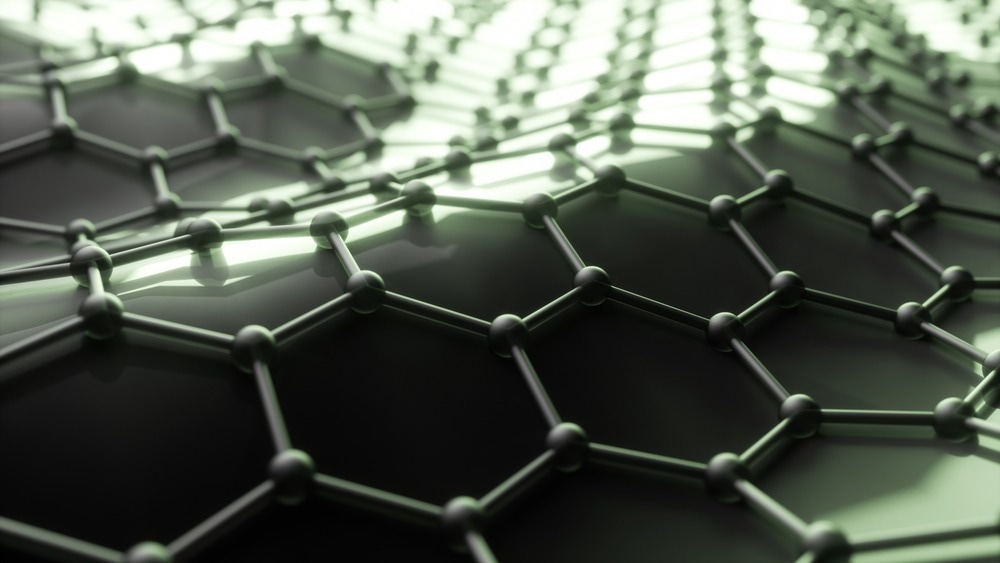Structurally solid and electrically conducting fabrics, especially those with large specific capacitances, have the potential to be used as electrodes in power storage systems such as fiber-shaped supercapacitors (FSCs).

Study: Carbon nanotubes boosts the toughness and conductivity of wet-spun MXene fibers for fiber-shaped super capacitors. Image Credit: OliveTree/Shutterstock.com
However, to manufacture fiber electrodes with excellent mechanical resilience, a high filler density is usually needed, impeding both electromechanical properties and power storage effectiveness. This challenge is addressed in a pre-proof paper from the journal Carbon, which presents an easily configurable wet-spinning approach for preparing versatile MXene/carbon nanotube (MXene/CNT) hybrid composites.
What are Fiber-Shaped Supercapacitors (FSCs)?
With the introduction of smart fabrics with embedded electromagnetic systems such as detectors, displays, and control systems, there has been a rise in the market for portable and composable energy storage setups. Fiber-shaped supercapacitors (FSCs) can provide an efficient solution compared to industrial energy storage devices due to their small size, dimensional stability, and elevated level of safety.
A broad range of electrocatalyst substances, such as polymer electrolytes, graphene, carbon nanotube (CNT), and organometallic oxidizes, have been incorporated into FSCs to reach high power storage effectiveness.
Because of its excellent electromechanical physical properties, dimensional capacitance, and great functional quality, MXene materials have lately been used as an exciting 2D nanostructures for electrode components. However, creating a mechanically durable MXene fiber with high relative specific capacitance remains a significant challenge.
Important Features of High-Performance Electrodes
Numerous notable characteristics are critical in fabricating a high-performance fiber-shaped working electrode for portable energy storage systems. High catalyst layer filling, excellent electrical permeability of fibers for decreasing internal resistance in lengthy equipment and facilitating rapid charging / discharging, and large-scale production capability are important features.
Meeting those requirements, however, has traditionally proven difficult for MXene-based anodes and cathodes.
Challenges Associated with MXene Fiber Electrodes
MXene is most commonly introduced into fabrics by placing it on silver-coated nylon or carbon fibers. This strategy provides an excellent advantage in increasing the structural rigidity of precursors, which is critical for achieving knittable strands. On the other hand, the external sturdiness of the loss-packed nanofibers is quite low, resulting in irregular electrical properties.
Another method is to intercalate MXene flakes with cations, which results in high structural rigidity and dielectric strength. The ionic crosslinking agents hold the nanosheets in place, resulting in a very low deformation and fragility under bending.
Although this technique increases mechanical properties, it unintentionally reduces specific capacitance. As a result, the prospective filler for MXene fiber reinforced composites should be highly conductive, have superior mechanical connections, and be as small as possible to decrease the use of raw materials.
A Carbon Nanotube Based MXene Fiber for FSCs
Because of their high reflectivity, mechanical properties, and nanometer-scaled radius, carbon nanotube was chosen as a filler for formulating high fibers based on the theory mentioned above.
The researchers first created an aqueous suspension of MXene and carbon nanotube and then continuously spun a homogeneous MXene/carbon nanotube blended fiber with alternatively layered MXene flakes and carbon nanotube composites.
The morphological characteristics and cross electron microscope segment of spun MXene/carbon nanotube fibers were studied using a scanning electron microscope. The formation of the disintegrated carbon nanotube was studied using a transmission electron microscope. The depth of the MXene flake, carbon nanotube, and the combination was measured using atomic force microscopy in air pressing mode.
Important Findings of the Study
This paper describes a method for producing strong, adaptable, and extremely conductive power storage MXene/carbon nanotube blended fibers using a configurable one-step process. Carbon nanotube composites were positioned between MXene flakes and formed a strong bond between them.
These connections not only improved the mechanical characteristics of MXene/carbon nanotube composite fibers but also aided the transfer of electrons in fibers. Because of the enhanced mechanical properties, hybrid fibers can be woven into the fabric. When MXene/carbon nanotube composite fiber is shaped into FSC, it provides a high gravimetric energy density as well as an impressive power density.
This work serves as a good starting point for preparing natural fibers with high electrical conductivity and mechanical characteristics, illustrating the prospects of MXene fibers in FSCs applications for driving compact, wearable, and lightweight electronic devices.
Reference
Zhao, X. et al. (2022). Carbon nanotube boosts the toughness and conductivity of wet-spun MXene fibers for fiber-shaped supercapacitors. Carbon. Available at: https://www.sciencedirect.com/science/article/pii/S0008622322006698?via%3Dihub
Disclaimer: The views expressed here are those of the author expressed in their private capacity and do not necessarily represent the views of AZoM.com Limited T/A AZoNetwork the owner and operator of this website. This disclaimer forms part of the Terms and conditions of use of this website.